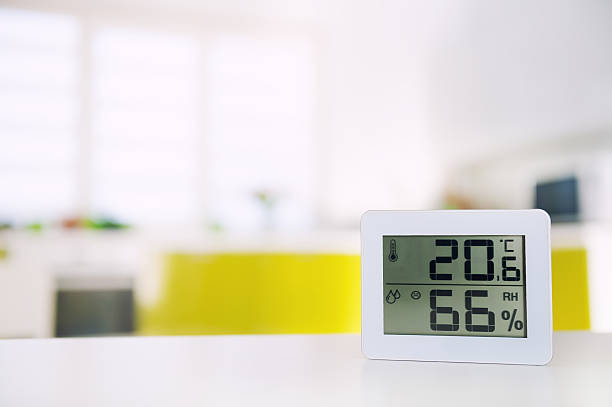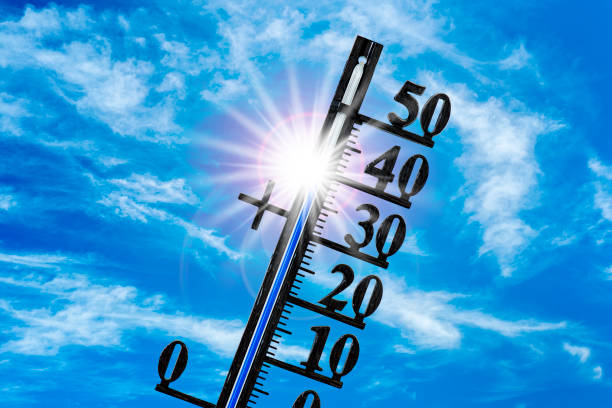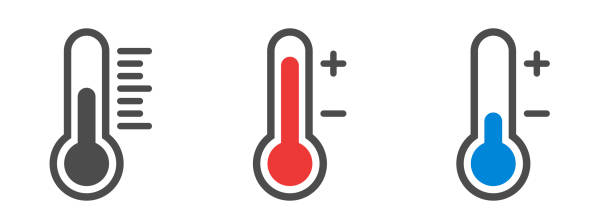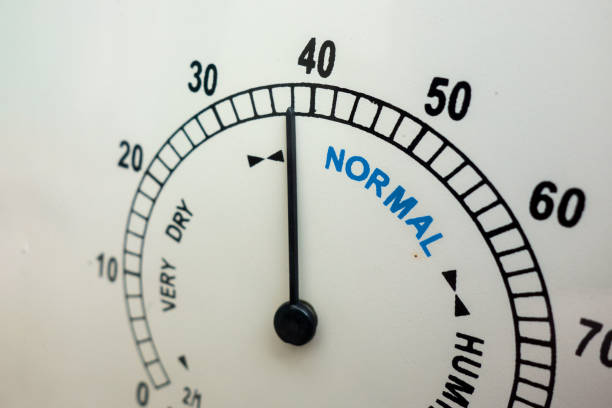Do you love the flavor and aroma of a perfectly aged cigar? Are you looking for the best ways to store your cigars? Look no further – we’ve put together a comprehensive guide on optimum temperature and humidity for cigars!
Here, we’ll discuss how to maintain the perfect environment for your cigars so that you can enjoy them at their peak.
Table Of Contents
−- Why Does Cigar Require Certain Temperature and Humidity
- What is the 70/70 Rule for Storing Cigars?
- Ideal Temperature Range for a Humidor
- What is the Ideal Humidity for Cigars?
- Humidity and Temperature: A Dynamic Relationship
- How High is Too High for Cigar Humidity?
- How to Maintain Optimal Conditions for Your Cigars

Why Does Cigar Require Certain Temperature and Humidity
Cigars require certain temperatures and humidity to preserve tobacco and create an optimal smoking experience. When stored at the right temperature, cigars will burn slowly and evenly, producing a lower-temperature smoke that is smooth and flavorful.
This helps to keep the tobacco moist and prevent the cigars from drying out. Additionally, excessive humidity can cause cigars to become damp, leading to an unpleasant smoking experience.
Heat and humidity can greatly affect the flavor of cigars. High temperatures and low humidity can cause the wrapper to overheat and burn too quickly, resulting in harsh, bitter smoke. The heat can also evaporate the essential oils that give cigars their flavor, leaving a dry and unpleasant taste.
On the other hand, too much moisture can cause the cigar to burn unevenly, resulting in an unpleasant taste. Cold temperatures can also cause the wrapper to shock and may even lead to mold growth. All these factors can lead to an unpleasant smoking experience by reducing the cigar’s bouquet and flavor.
What is the 70/70 Rule for Storing Cigars?
The 70/70 rule is a guideline for maintaining the correct humidity level in your humidor. It states that you should aim to keep the humidity level at 70% and the temperature at 70°F (21°C). This ideal temperature range is great for storing cigars, as it helps maintain their flavor and aroma. Additionally, it helps protect and preserve the cigars in your humidor, which is essential for optimal storage.
Ideal Temperature Range for a Humidor

The ideal temperature range for a humidor is between 63 to 70 °F, and the most common rule for optimal cigar storage is the 70/70 rule – keeping your cigars at 70% humidity and 70 degrees Fahrenheit.
The lower temperatures below 54°F (12°C) will impair the desired aging process of the cigars. It is important to maintain your humidor below the maximum temperature of 73°F (23°C) and between 65-74% humidity, with an ideal temperature at 70°F (21°C) and 70% relative humidity.
Each temperature has a corresponding relative humidity (RH) that helps maintain the correct absolute humidity (AH) to keep your cigars aging nicely, as displayed in the chart. Keeping your cigars at this optimum temperature and humidity will ensure they last longer and retain flavor.
What is the Ideal Humidity for Cigars?
Many cigar aficionados agree that the ideal humidity rate for cigars is about 12%-15% of their weight. The relative humidity in the humidor is one of the main factors affecting the quality of a cigar, so it is important to understand how RH and AH can affect your cigars. To keep cigars in their ideal condition, it is best to keep them between 65% and 72% RH.
Humidity and Temperature: A Dynamic Relationship

Humidity and temperature have a dynamic relationship when it comes to cigar smoking.
Understanding Relative humidity (RH)
Relative humidity (RH) measures the water vapor in the air relative to the maximum amount of water vapor present at a given temperature.
The ideal RH for cigars is between 70-73% with a temperature ranging from 68-72°F, which allows for a balanced level of AH and prevents cigars from drying out too quickly or becoming too moist.
Too low RH levels and too high temperatures can cause cigars to dry out, resulting in a harsh smoking experience. At the same time, too high RH levels and too low temperatures can cause cigars to become too moist and difficult to light.
Maintaining Cigar Quality with Relative Humidity
Maintaining the ideal relative humidity (RH) for your cigars is essential for ensuring their quality. Cigars easily absorb moisture from their environment, so keeping them at a consistent RH between 63 and 70 degrees is important. The colder it gets, the moister your cigars will get, so you may need to adjust your RH accordingly.
The ’70/70 rule’ states that proper RH and temperature should be maintained at 70% and 70°F, respectively. This ensures that the right, absolute humidity (AH) level is present, which is key for preserving cigars over time. With the right RH and temperature levels, you can ensure that your cigars remain in peak condition for longer.
Understanding Absolute Humidity (AH)
Absolute humidity (AH) is calculated by taking the mass of water vapor in the air and dividing it by the air volume.
AH refers to the amount or density of water vapor in the air that comes into contact with cigars and preserves or destroys them. No moisture is added or removed; the reading will change because the humidity reading is relative to temperature. When a cigar is manufactured, it comes out of the factory with a 12-15% moisture content.
To maintain their richness and taste, cigars must be kept close to 70% relative humidity (RH) and at a temperature of 70°F. Keeping this combination of RH and temperature will result in the right AH or water vapor pressure to store your cigars in optimal condition.
For instance, someone that keeps their cigars at 78°F for whatever reason would have to be at 55% RH to have the same absolute humidity as someone keeping their cigars at 70°F and 70% RH. Thus, relative humidity alone should suffice, and we should target the same RH at all temperatures for optimal cigar storage and smoking.
How to Calculate Absolute Humidity (AH)
To calculate the absolute humidity (AH) of your cigar humidor, you need to consider both the temperature and relative humidity. Temperature affects the amount of water vapor in the air, and relative humidity indicates the present state of absolute humidity relative to a maximum humidity given the same temperature.
To find the absolute humidity, determine the mass of water vapor in the air, then divide it by the total air volume. The absolute humidity calculator allows you to determine this figure from the relative humidity and air temperature. In general, cigars fare best at a relative humidity between 30% and 50%, but closer to 70% is ideal.
Maintaining a consistent relative humidity level is key to maintaining quality cigars, as fluctuations can cause damage to older products. As temperatures increase, relative humidity decreases, so it is important to adjust your humidor’s rH accordingly. For example, at 70°F and 70% RH, the Absolute Humidity is around 13 grams of water per cubic meter, while air at 62°F and 62% RH has 8.8 g/m^3.
How High is Too High for Cigar Humidity?

When it comes to cigar smoking, it’s important to understand how too high of relative humidity can damage premium cigars. Anything above 70-72 percent is considered too high and can cause cigars to become damp. This can lead to mold growth and an unpleasant smoking experience.
Additionally, excessive humidity can cause the cigar to swell, making it hard to smoke and ruining the flavor. Maintaining an ideal relative humidity level for your cigars to burn slower with better flavor while also maintaining their quality is important.
How to Maintain Optimal Conditions for Your Cigars
Once you’ve determined the ideal temperature and relative humidity for your cigars, it’s important to maintain these levels for optimal cigar storage. Here are some tips to consider to ensure that your cigars stay in prime condition:
The best way to do this is by using a humidifying device in your humidor, such as an electronic humidifier or a sponge.
Invest in a quality humidor that seals tightly, as this will keep your cigars at the same humidity level for long periods.
Make sure to shut the lid or door of the humidor after adding the device and periodically add distilled water to the device.
Ensure your humidor is kept in a cool, dry place away from direct sunlight. If temperature and humidity levels fluctuate drastically, your cigars won’t age properly. Monitor the levels often with a hygrometer, and adjust accordingly.
Place a humidifying solution inside the humidor to keep the level of humidity constant. Do not store cigars in plastic bags, as this will trap moisture and ruin the flavor of the cigars.
Drastic fluctuations in temperature and humidity should be avoided, as this will cause your cigars to dry out or become too damp.
Finally, remember that cold temperatures can cause moisture to form on the cigar’s surface. To avoid this, keep cigars stored at room temperature and avoid extreme temperatures. With these tips, you can ensure that your cigars always taste their best!

jay
Self proclaimed cigar expert. I've been smoking since 2010. I've practically lived at a cigar lounge from 10am to 10pm and trying every new cigar that came out for years.

